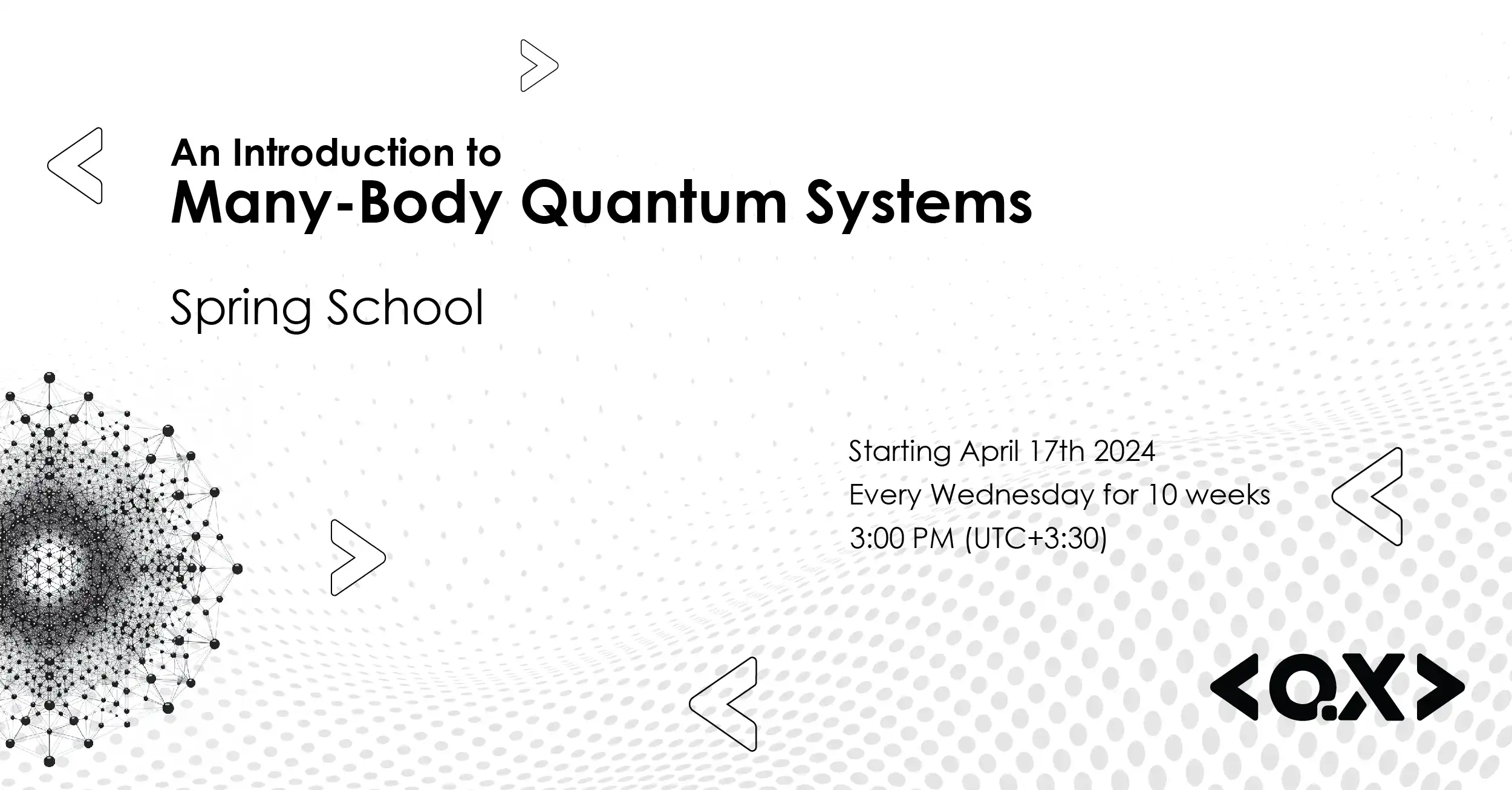
Spring School on Many-Body Quantum Systems
Unlock the Secrets of Quantum Matter
Are you ready to delve into the fascinating world of many-body systems? Quantonix invites you to join our exclusive course where we unravel the mysteries of quantum interactions, statistical mechanics, and more. Whether you’re a curious beginner or an experienced physicist, this course promises to expand your understanding of the fundamental building blocks of matter.
Course Overview
1. Second Quantization
- Schrodinger Equation in First and Second Quantization: Understand the transition from single-particle quantum mechanics to many-body systems.
- Creation and Destruction Operators: Explore the mathematical tools that describe particle creation and annihilation.
- Fields: Dive into the concept of quantum fields and their role in describing interactions.
2. Statistical Mechanics
- Bosons and Fermions: Discover the distinct behaviors of these two fundamental particle types.
- Zero-Temperature Formalism I:
- Green’s Functions in Zero Temperature: Learn how Green’s functions provide insights into the behavior of quantum systems at absolute zero.
- Fermi Systems Linear Response Theory: Explore the response of fermionic systems to external perturbations.
3. Zero-Temperature Formalism II
- Bose Systems: Investigate the properties of bosonic systems at extremely low temperatures.
4. Finite-Temperature Formalism I
- Fields Theory at Finite Temperature: Understand how quantum fields evolve in a thermal environment.
- Physical Systems at Finite Temperature: Study the behavior of matter when subjected to heat.
- Real-Time Green’s Functions: Analyze dynamic processes in many-body systems.
5. FINITE-TEMPERATURE FORMALISM II
- Physical Systems at Finite Temperature: Learn how to apply the finite-temperature field theory to various physical systems, such as metals, superconductors, magnets, and gases.
6 & 7. FINITE-TEMPERATURE FORMALISM III
- Real-Time Green’s Functions
8 & 9. FINITE-TEMPERATURE FORMALISM IV
- Imaginary Time and Matsubara Green’s Function: Review the imaginary time formalism of finite-temperature field theory, also known as the Matsubara formalism. Analytic Continuation and Dispersion Relations: Learn how to perform the analytic continuation from imaginary to real frequencies, and how to derive the dispersion relations for the Green’s functions.
10. INTRODUCTION TO TOPOLOGICAL MATERIALS
- Topological Invariants and Topological Phases: Understand the concepts of topological invariants and topological phases of matter, and how they are related to the symmetry and topology of the system. Topological Insulators and Superconductors: Study the properties and applications of topological insulators and superconductors, which are materials that have non-trivial topological phases and exhibit exotic surface or edge states. Kitaev Model and Majorana Fermions: Investigate the Kitaev model, a simple yet rich model of interacting spins on a lattice, and its connection to the Majorana fermions, which are exotic particles that are their own antiparticles.
Limited Availability
This course is an exclusive opportunity for only 5 participants. Secure your spot now and embark on a journey through the quantum realm. If you are interested in the course, please fill in your contact information and attach your CV in the form below. We will review your application and get back to you shortly. The course will provide you with valuable knowledge and skills in quantum computing, and you may have the opportunity to be recommended to some of the leading research labs in the field. The attendee fee is 119$ and the further information will be provided to you after we consider your CV.


